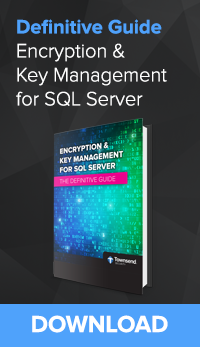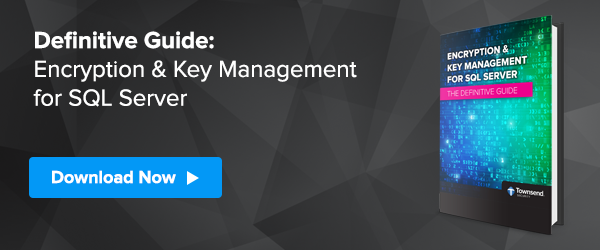Microsoft introduced Always Encrypted in SQL Server 2016 as a way to protect data in SQL Server databases. Always Encrypted runs on a client side system and encrypts data before it is stored in the SQL Server database. This provided some new protection for sensitive data stored in SQL Server - at least the server administrator and the DBA would not have access to the sensitive data. Or, that was the idea.
 Always Encrypted suffered from severe limitations and did not achieve wide acceptance and deployment. The types of SQL queries and operations you could perform were minimal. You could not do basic SQL query operations that most businesses rely on. So Always Encrypted has not been deployed much.
Always Encrypted suffered from severe limitations and did not achieve wide acceptance and deployment. The types of SQL queries and operations you could perform were minimal. You could not do basic SQL query operations that most businesses rely on. So Always Encrypted has not been deployed much.
Microsoft is attempting to address these limitations in a facility called Secure Enclaves. Secure Enclaves is a special operating environment that runs on SQL Server itself. You can think of it as a special virtual environment that can’t be accessed by a server administrator or DBA, but which can decrypt sensitive data from the database and perform those more complex SQL operations. SQL Server runs in one environment, and Secure Enclaves is a separate, more secure environment on the same server that runs those SQL requests against decrypted data.
Processing data in a Secure Enclave means that the encrypted data has to be decrypted. How does that happen if the encryption key is on the client-side system and not on the SQL Server system? There are now special drivers on the client-side system that will send the encryption key to the Secure Enclave when needed.
So, is this more secure? That is a hard question to answer. Here are some things to think about:
- Protected execution environments, like Secure Enclaves, have their own security concerns. The operating system hypervisors that manage these secure environments bring their own attack surface. Adding new attack surfaces brings more risk.
- The client-side implementation of Always Encrypted also adds an attack surface. Again, the more places that are potentially open to an attacker the more risk you bear.
- In many cases, client-side systems are not as well protected as core SQL Server systems. Think of a user PC in your organization, or think of a remote office server. User and remote systems are notoriously hard to protect well.
- Encryption key management is the linchpin of your encryption strategy. Unfortunately, Always Encrypted has limited options for deploying industry standard key management. Always Encrypted supports storing encryption keys in the Windows Certificate Store and in Azure Key Vault. It does not support the industry standard Key Management Interoperability Protocol (KMIP). This means you are very limited in terms of your key management options.
- Using the Windows Certificate Store to protect your Always Encrypted encryption keys may not be compatible with the California Consumer Privacy Act (CCPA) -and using Azure Key Vault may violate PCI Data Security Standards (PCI DSS) cloud guidance.
- A core aspect of your encryption key management strategy is monitoring who has access to encryption key credentials, and reporting on access failures. When the encryption is performed on the client system by Always Encrypted, you may have limited ability to monitor activity and detect unauthorized access attempts. That further complicates your security posture.
My thoughts:
One of the primary goals of Always Encrypted and Secure Enclaves is to protect sensitive data by implementing Separation of Duties. That is, ensuring that system administrators and DBAs do not have access to both protected data and the encryption keys. This is a core security principle when protecting data-at-rest.
You can achieve Separation of Duties by using a proper key management solution like our Alliance Key Manager. By assigning key management duties to a security professional, and isolating key management responsibilities from DBAs, you achieve the heart of the Separation of Duties goal. I believe that when properly implemented, a SQL Server Transparent Data Encryption (TDE) implementation with good key management gives you a very strong security posture without the risks involved with Always Secure and Secure Enclaves. Of course, you have to do a lot of other things to secure your Windows server and SQL Server. Proper encryption and key management is only one part of your overall security strategy.
Microsoft is doing a lot of things right in the area of data protection. The recent implementation of encryption for SQL Server Standard Edition 2019 is exactly the right thing to do. It puts encryption and key management in the hands of a lot of SQL Server users who have not had access to this technology. I hope that Microsoft will eventually embrace open standards for encryption key management in Azure and in other Microsoft products. This will be a great step forward for Microsoft customers.
Patrick

